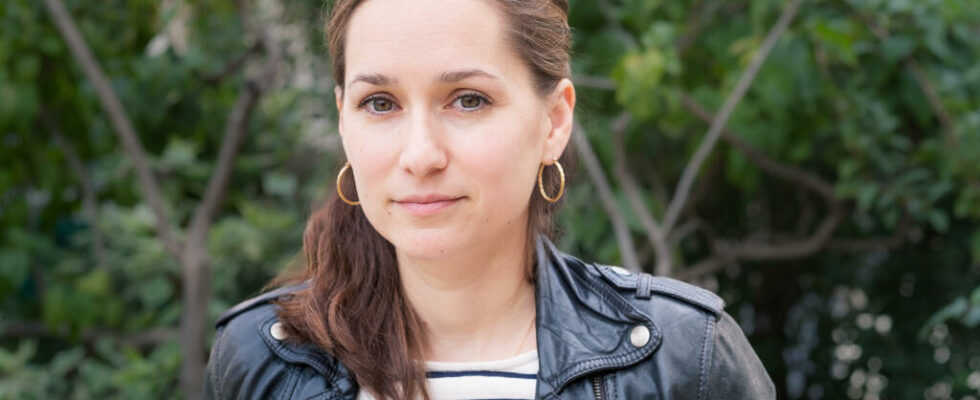With this first work from her doctoral thesis, researcher Camille Mahé, lecturer at the University of Strasbourg, paints a striking portrait of a generation of children who were between six and fourteen years old at the end of the Second War. worldwide. From a comparative history perspective, it describes a large number of common experiences partly escaping geographical boundaries and ideological conditioning.
5 mins
The last two decades have seen the development of a field of research and exploration around childhood and adolescence at war, which have long baffled historians. How can we understand the written or drawn testimonies of young people and the memories of adults? Building on pioneering approaches, such as those of Manon Pignot, for the World War ICamille Mahé was also confronted with a vast corpus of more traditional archives.
Also read“Deflagrations”, the war drawn by children
With this work, she intends to shake up obvious facts which, sometimes, border on cliché. Are children necessarily the first victims of the conflict? Do they all come out traumatized? Where is the greatest test, in the war itself or in the period immediately following it? Is the experience of children necessarily and primarily marked by the geographical borders between which they live? As one might imagine, none of these questions require a simple or definitive answer.
War as normality
To carry out this investigation, she covered a very large area of exploration in Western Europe: three countries which were, in various ways, among the main protagonists of the conflict. All of them have in common that they have been under the thumb of a totalitarian regime – Nazi Germany – aspiring to be so – Fascist Italy – or at the very least carrying an authoritarian matrix – Vichy France. All three were heavily bombed, Germany in the first place – recipient of 50% of the Allied bombs – France and Italy arriving far behind despite everything, but in comparable proportions.
The age group excludes adolescents over the age of fourteen, already immersed in adult life, particularly within the working classes, and more permeable to the political and ideological issues of the moment. It also excludes children under six years old, whose memories are very incomplete and largely reconstructed by the family story. On the other hand, the study is not limited to the most affected minorities – starting of course with Jewish and Gypsy children, victims of genocides – but embraces the entire population, whether they live in town or in the countryside, in a area marked by intense fighting or away from confrontations.
Also readThe “teen fighters” of the Great War, under the gaze of Manon Pignot
For many children, war is awaited with excitement. Its often distant presence influences the daily climate and therefore creates a normality that the end of the conflict partly shatters. She takes on unreal trappings as long as she does not burst into the family space. Thus, the memories collected are not linked to the major events that we spontaneously situate today, the Normandy landings in June 1944 or the Liberation of Paris in August, to stick to the French framework. The childhood calendar is much more that of direct witness: a bombing which destroyed the house or the astonishing eruption of the conflict in the immediate surroundings.
War as imagination and reality
In France for example, for many children, except in the North and Picardy marked by the exodus and the blitzkrieg of May and June 1940, the war only became concrete towards the end of the conflict, where the clashes with the Resistance is multiplying, where entire armies are evolving on the territory, or finally, in large cities throughout France and a large part of Normandy, the bombings are becoming more regular and above all particularly murderous. The memory of the bombs brings together German, Italian and French children living in an urban environment. They destroy families and lives, but also create new landscapes – which John Boorman showed well in his film The Seven Years’ War (1987), based on his memories of England Blitz.
Also readSuspended time by Aldo Zargani
The impact of war is not limited to the areas of conflict. Dietary deficiencies create attention difficulties. Children are 3 cm shorter in France at the same age between the start and end of the conflict. Certain diseases are regaining strength or making a reappearance: malaria in Italy, tuberculosis in the three countries with peaks at different periods. Added to this is the danger of shells and abandoned bombs, which injure and kill children by the thousands – a question on which Camille Mahé continues her research today.
Through its atypical chronological framework (1943 – 1949), the work finally shows how the experience of war continues once peace returns. By leaving behind fields of ruins, it weighs differently, but lastingly, on children and adults, as Christian Zarifian showed in his documentary Clean slate dedicated to Le Havre, in 1988. The former kept the memory of a freer life while the latter spoke of deplorable sanitary conditions and immense material difficulties. This surprising observation, and many others, run through this book, as abundant as it is rigorous, which should in turn open up new fields of study.
► Camille Mahé, Children’s World War II, Germany, France, Italy (1943 -1949)Puf, September 2024.
